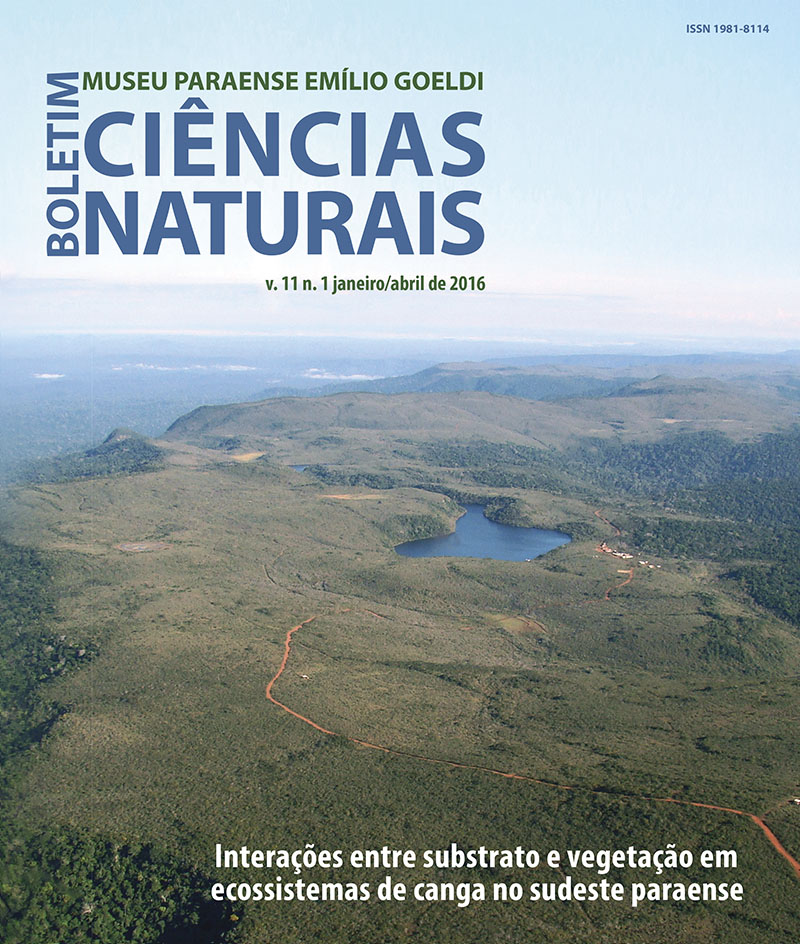Characterization of soils derived from mafic rocks in the Serra de Carajás
DOI:
https://doi.org/10.46357/bcnaturais.v11i1.458Keywords:
Pedofauna, Weathering, Plinthosols, Ferralsols, Amazon rainforestAbstract
Serra de Carajás is located in Pará state, Brazil, has a great diversity of landscapes, structured by different lithologies. The Parauapebas Formation consists of mafic volcanic rocks of Archaean age and whose degree of surface modification enabled extensive coverage of generally deep soils, covered by dense forest. A typical expression of this Formation is flat-topped plateaus and steep edges, with a low degree of drainage incision on top. The objective of this study was to characterize the different soils that occur in this Formation and its relationship to their environment. With the exception of some cambisols occurring at the edges of the plateaus, the others soils have a high degree of weathering, with strong dystrophy and lack of easily changeable primary minerals. These soils are mostly classified as extremely weathered, compared to the more altered soils of Brazil. The native fauna that transits in some soils (P3P) and the pedofauna (termites and ants) (P5P) are responsible for the increased levels of P. The hydromorphic environments are associated with areas where plinthic horizon is thicker and near the surface, which hinders water infiltration. The size and deciduousness vegetation is influenced by the occurrence of plinthic horizon and related to its depth.
Downloads
Published
Issue
Section
License
Publication means fully assigning and transferring all copyrights of the manuscript to the journal. The Liability Statement and
Assignment of Copyrights will be enclosed with the notice of acceptance. All the authors must sign the document and return it to the journal.








